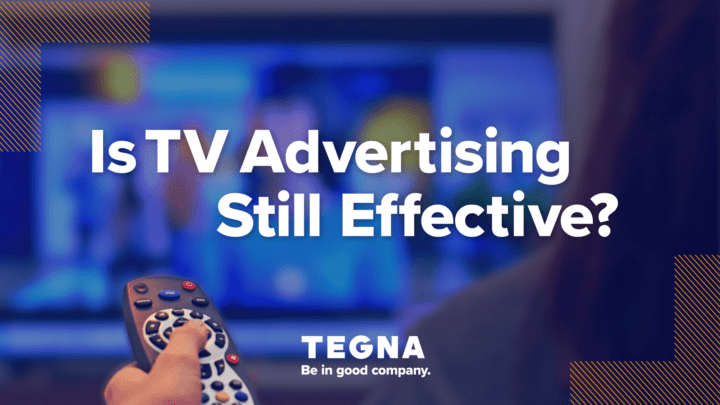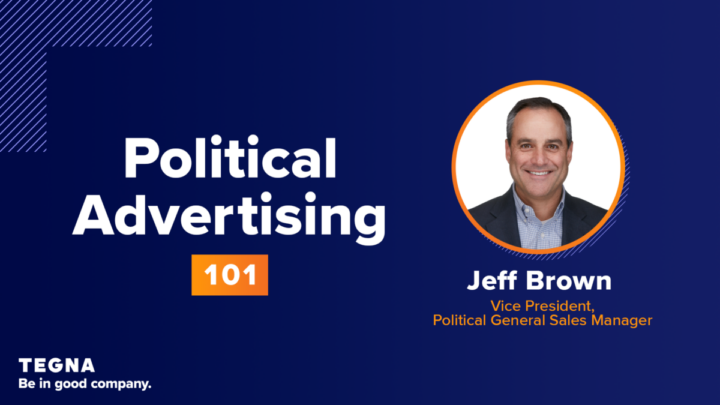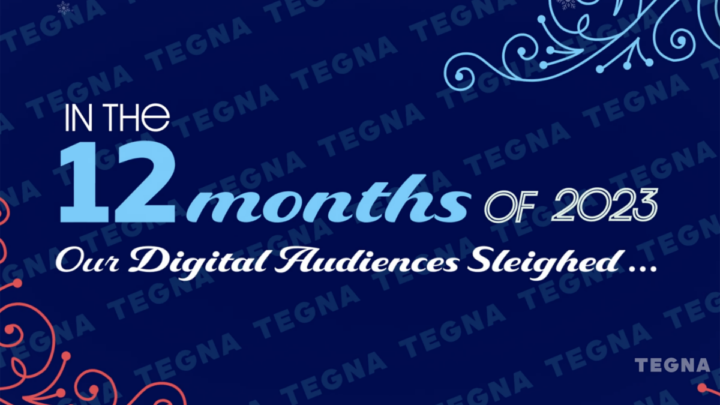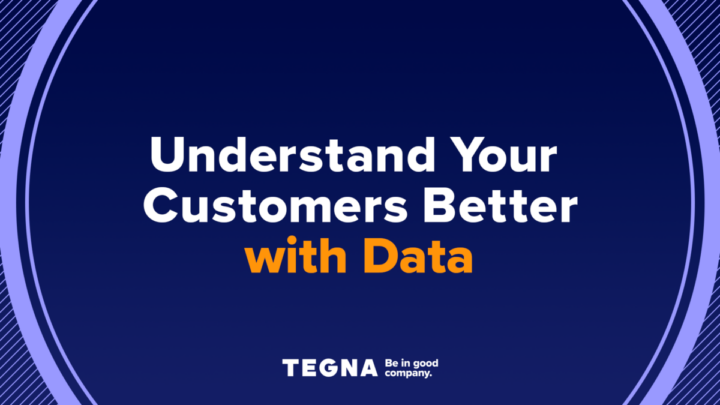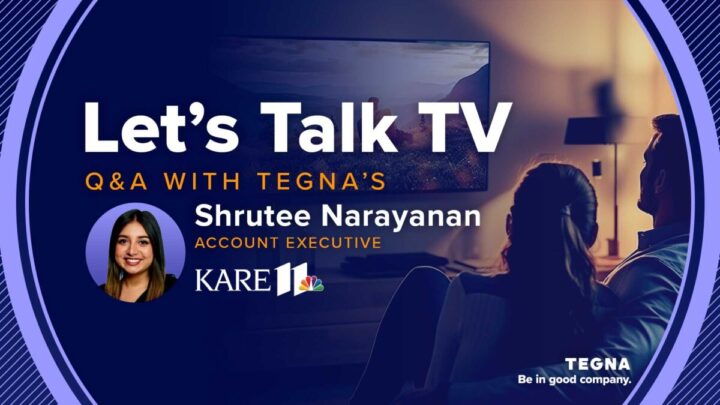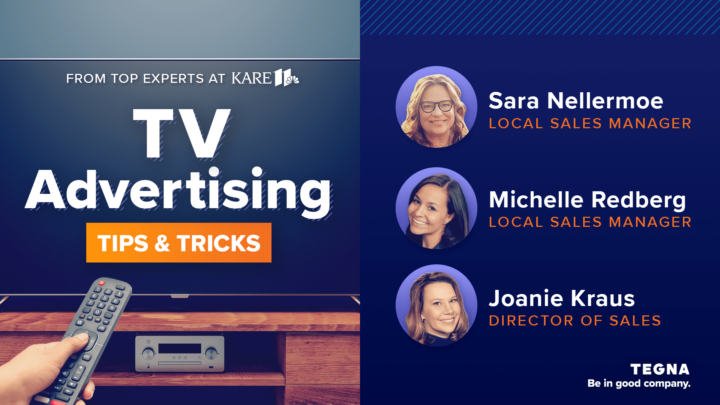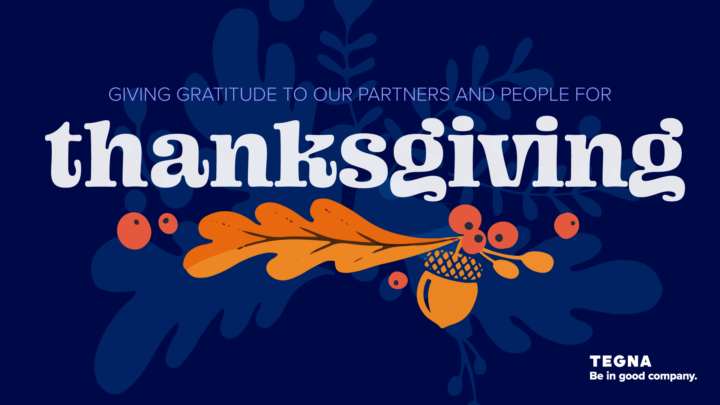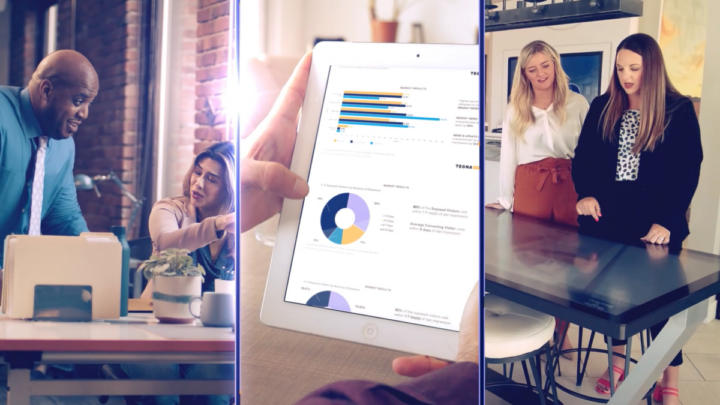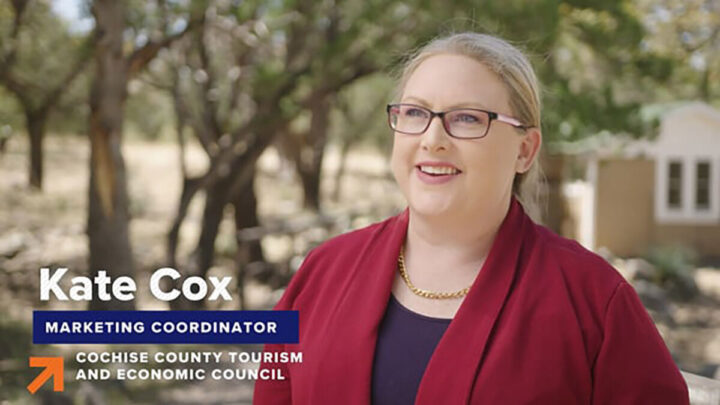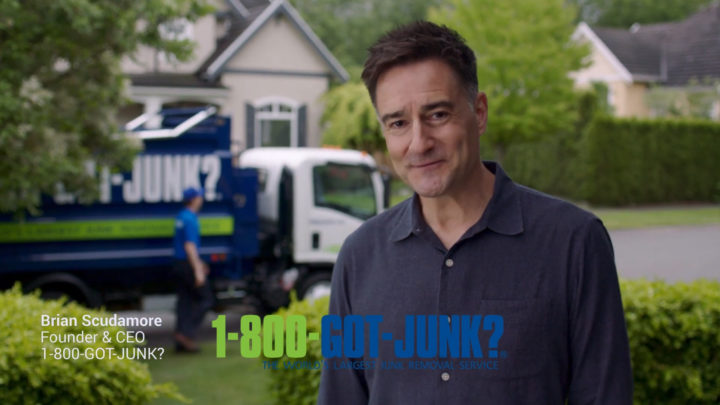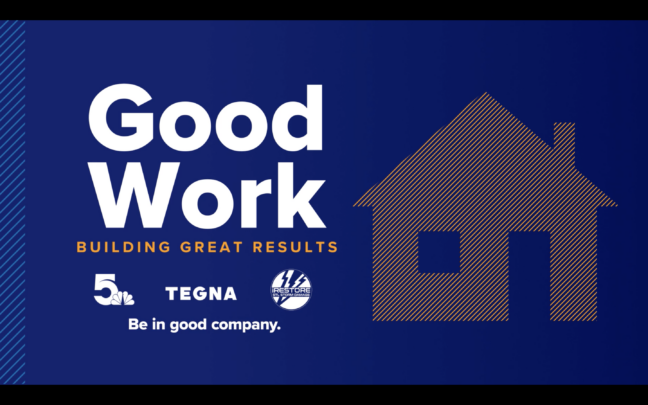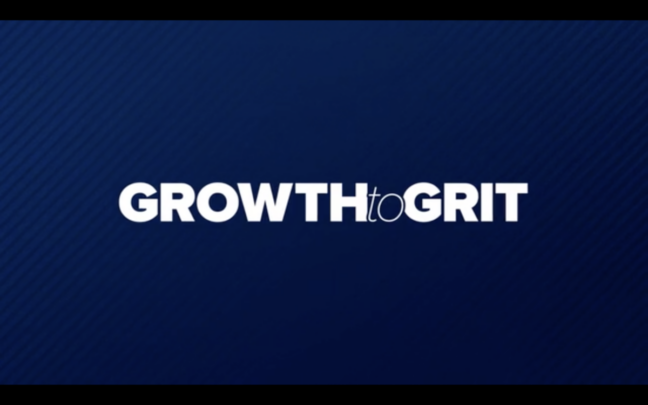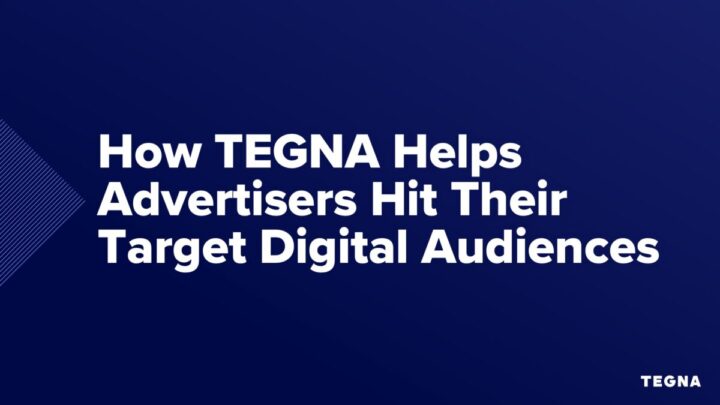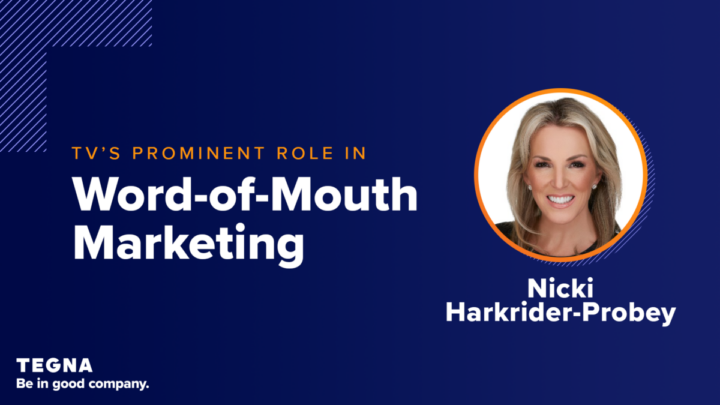Let’s Talk TV: Using Brand Advertising to Stay Relevant During an Election Year
Navigating the ever-changing media landscape is a constant challenge for brand marketing and advertising in all industries, no matter the day, season, or year. Throw a national election into the mix, and the challenge becomes even more complicated, intricate, and nuanced.
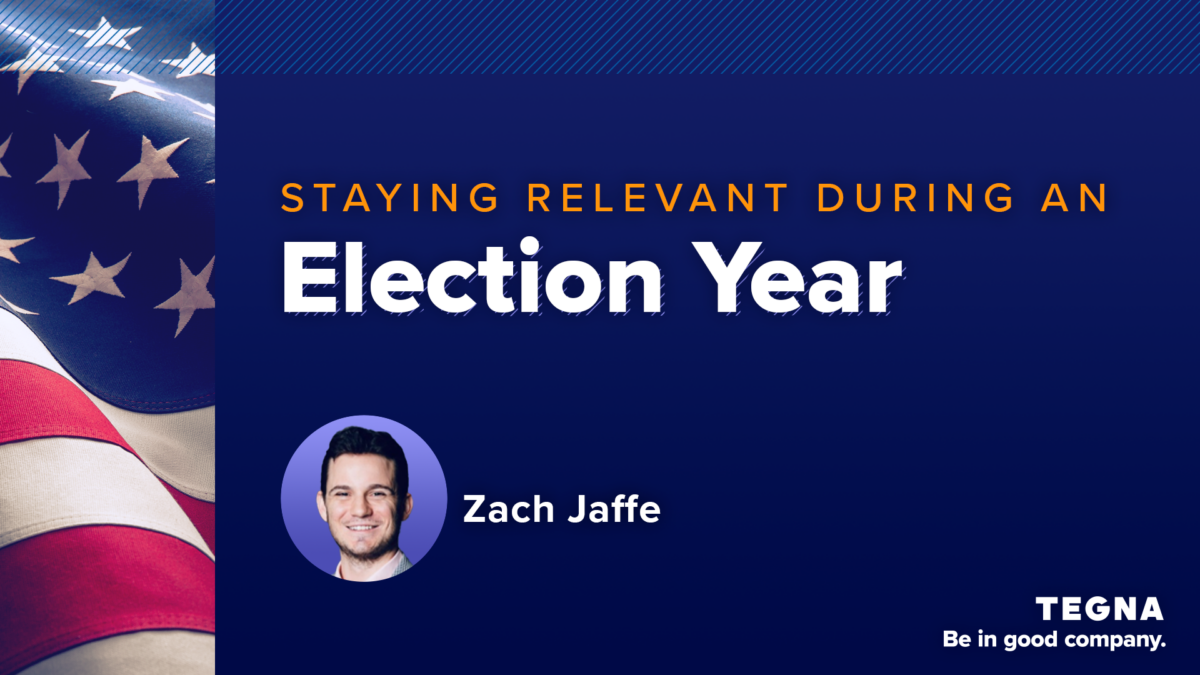
To help brands guide their marketing and advertising efforts in 2024 – a year with a Presidential election – we sat down with Zach Jaffe, TEGNA’s Sales Enablement – Team Lead. He shares his insights, tips, and recommendations to help brands understand political seasons’ unique challenges and opportunities to maintain relevance and connect with their audiences amid the electoral frenzy.
Let’s dive right in.
Why is Brand Advertising Important During an Election Year?
Elections typically usher in periods of polarization and can turn many consumers off of media altogether. Being present and offering non-political content during this time can help ease frustrations while communicating your brand values regardless of the election outcome. But it’s not easy. Brands must navigate these challenges strategically to ensure their messages resonate with their target audiences amid the electoral frenzy.
Q: Which factors make advertising challenging during election years?
A disruptive political environment will create chaos and increased competition for ad space as politicians aggressively campaign, making it challenging for brands to secure inventory. That’s because the demand for advertising slots surges during election cycles. Political advertising campaigns wield deep pockets and are willing to outspend brands across broadcasting, streaming, and digital platforms. This year alone, political ad spending will hit $7.06 billion. Preemptive rights to TV commercial slots, breaking news coverage, and make-goods for bumped brands further exacerbate this scarcity.
Q: How do preemptive rights impact brand advertising on broadcast networks?
For broadcast, let’s say a law firm buys a 15- or 30-second spot during a Dallas Mavericks NBA game. Then, the governor’s office calls and wants to run a campaign ad in that spot. By law, TV networks MUST give the ad space to the governor. As a result, local/regional/national brands get limited ad inventory, and networks must pay back money to brands or “make good” with other (less desired) TV commercial slots (if any are left).
Q. What challenges do brands face during election seasons in the streaming television landscape?
With streaming technology, political campaign managers have become more savvy since the 2016 and 2020 elections. They now know that OTT/CTV is no longer an experiment or a nice to have. It’s a must-have to reach the largest audience in combination with broadcast.
For non-political brands, the challenge comes when political campaigns drive up CPM pricing. Hypothetically, you are used to paying $15 to $20 CPM. Two days before your campaign is supposed to run, at the 11th hour, a political candidate’s campaign outbids you at $26 on the ”open exchange” or within a ”private marketplace.” You must pay $27 (or more) to get your inventory back.
Q: How do programmatic and ad-tech levers impact brand advertising strategies during election years?
Before “tech” became synonymous with “ad,” media professionals lived up to a simple promise: clients would know where their ads ran. Unfortunately, research shows that in 2023, 45% of Fortune 500 companies paid for ads on “connected TV channels that are either fake or feature brand-unsuitable divisive or false content.”
Brand safety, privacy laws, the depreciation of third-party cookies, and ad fraud continue to be pain points for brands looking to find meaningful ways to engage with specific audiences. Not only does TEGNA ensure brands know where their ads run, but we’ve also created AudienceOne, a non-programmatic, first-party audience targeting solution that marries brand safety with precision audience targeting. This is one of the only first-party data solutions in the local news landscape that combines behavioral and contextual data to reach audiences – while protecting brands from unsafe/fraudulent ad environments.
How Can Brands Stay Relevant in a Political Season?
A: Brands can stay relevant through advertising in a political season by leveraging big screens, partnering with premium aggregators, embracing a multi-platform approach, engaging in community-focused initiatives, and capitalizing on the halo effect of trusted local content. By adopting these strategies, brands can maintain visibility and connect with their audience amid the political noise.
Q: Why should brands utilize TV (and its bigger screen) versus mobile and smaller digital platforms?
Larger, landscape-oriented screens, such as television, offer more engagement and higher brand recall because viewers watch the content, compared to smaller screens, which lend themselves to endless scrolling. Bigger screens also lead to co-viewing, when one screen has multiple viewers and offers greater reach, which can be described as “free” impressions.
By investing in TV advertising during key programming slots, brands can effectively reach their target audience and maintain relevance amidst this busy time.
Q: Why should advertisers opt for premium CTV streaming aggregators?
The shift to streaming creates an opportunity for brands to have a cost-conscious way to reach these viewers. We often hear it can take up to six or more programmatic Demand Side Platforms (DSPs) to achieve enough reach and scale. By working with a trusted premium aggregator that has curated direct-to-server integrations to premium inventory, advertisers can simplify their media buying and ensure their campaigns achieve reach and scale — with one simple buy, one comprehensive campaign, in one data stream.
Q. What’s the significance of combining linear broadcast and streaming television?
With 83% of US households streaming content, brands can maximize their reach by combining traditional linear broadcast with streaming and CTV advertising strategies. This approach ensures broader exposure and enables brands to engage with audiences across various platforms with various content types, including live sports, movies, network programming, live news, and TV shows/series.
With the total TV experience across broadcast and CTV, brands also avoid pirated and questionable content, short-form videos, user-generated content, excessive horror, explicit content, and copyright infringement.
Q. Are there advertising options that political campaigns can’t pre-empt
Localized morning and afternoon lifestyle shows, like WFAA’s Good Morning Texas, bring brands on the air to help tell their story, elevate their brand voice, and re-engineer the vision of their brand with the power of video. Lifestyle integrations aim to provide brands anywhere from two to five minutes on the air to tell their story (rather than a 15- or 30-second commercial), elevate their brand voice, and align themselves with community values.
These appearances act as educational tools, position the brand as the expert in their space, positively impact the bottom line, and make a well-produced TV interview to keep and re-purpose on their digital and social channels.
Other content sponsorship opportunities with your local broadcast news station can include on-air mentions, tickers, logo placements, use of video, social media reach, morning and evening options to align your brand within the community (book drives, food banks, military appreciation, climate, weather, traffic, sports, and more), which also, more importantly, keep your brand on the air and top of mind. These sponsorship options are not subject to pre-emptive rights of political campaigns.
Q. What is the Halo Effect, and how can brands capitalize on it?
Trust is crucial, and local news journalists, sports anchors, and weather reporters have become more trusted voices in the media landscape. For marketers, this extends to brands that advertise adjacent to millions of Americans’ everyday values: hard work and dedication, teamwork and unity, heartbreak and loss, triumph and victory.
This halo effect of being a part of the community AND running ads alongside the right local content can drastically improve brand perception and customer loyalty.
What Type of Media Partnership is Best?
Navigating brand advertising during an election year requires strategic foresight, adaptability, and choosing the right partners to help guide your campaign. By understanding the unique challenges and opportunities political seasons present, brands can effectively maintain relevance and connect with their audiences amidst the electoral season.
Q: How can TEGNA help brands navigate advertising challenges during an election year?
We provide local and national expertise, ensuring tailored advertising solutions for brands across different markets. By partnering with TEGNA, brands can avoid bidding wars and CPM hikes, ensuring a more stable, cost-effective, customized advertising strategy to align with your objectives and goals.
We also believe in a human-centric approach to advertising, ensuring that brands’ messages resonate authentically with their target audiences rather than being lost in the noise of automated ad placements within questionable content.
About TEGNA
Cross-channel marketing is a crucial approach for brands of all shapes and sizes. Tying together TEGNA’s linear TV, CTV/OTT streaming, and digital solutions enables brands to craft an unforgettable and persuasive campaign, ultimately boosting ROI and growing business. Discover how our marketing and advertising solutions can elevate your brand. Let’s get in touch.
